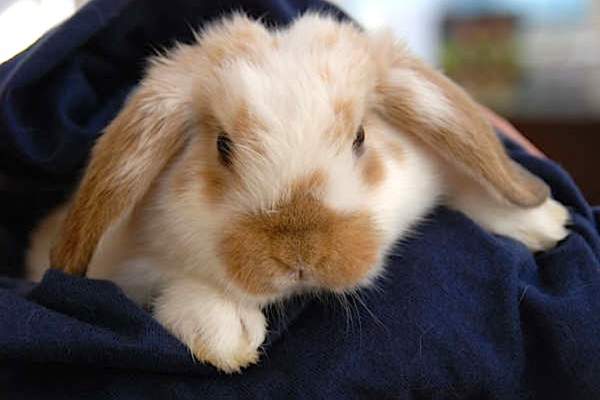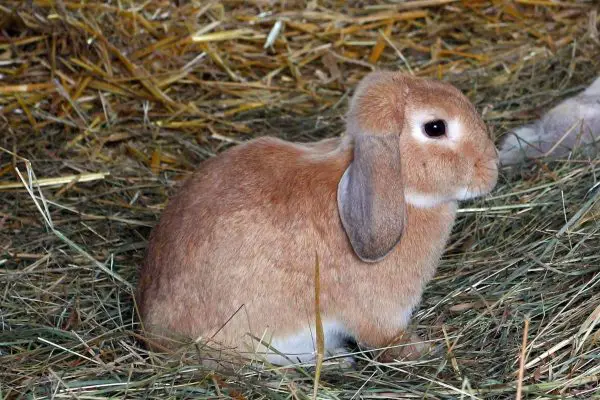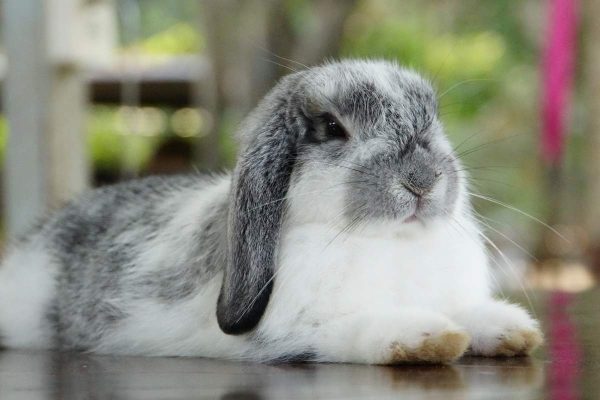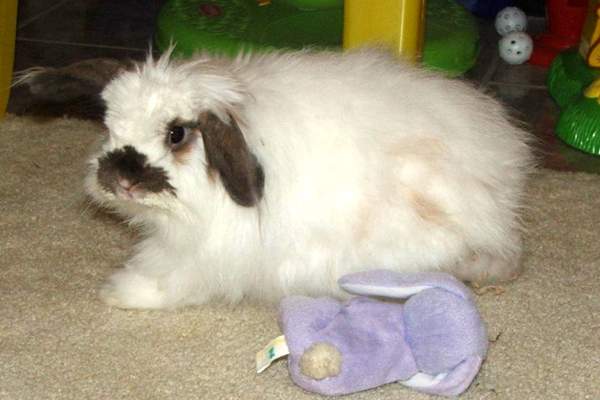Rabbits are among the most adorable creatures on the planet. However, if you look closely at some breeds, you may have wondered why do some rabbits have floppy ears.
This may appear cute to you because floppy-eared bunnies are absolutely adorable, but it is difficult not to wonder if it is normal for them to have. This article will discuss rabbits’ floppy ears and their effects on the animal.
Why do some rabbits have floppy ears?
Some rabbits have floppy ears as a result of genetic mutations caused by selective breeding. It can be very cute, but it is not normal for them to have. It’s important to remember that these floppy ears for rabbits are not good for them and makes them more susceptible to infections and other health issues than rabbits with upright ears.
Key Takeaways:
- Rabbit ears are necessary for temperature regulation in the animal.
- Floppy rabbit ears are not natural and are usually the result of selective breeding.
- Floppy ears can lead to serious problems in rabbits, such as trauma, obesity, and inability to control body temperature effectively.
Rabbit ears

Rabbit ears are an essential part of a rabbit’s anatomy. They’re the small flaps that hang off the side of their heads, and these animals use them for a variety of purposes. Rabbit ears are used for thermoregulation, which means they use their ears to keep their bodies at a comfortable temperature.
These cuddly creatures’ ears have blood vessels that expand when their body temperature rises. This increases blood flow in their ears, allowing more body heat to escape through them. Their ears also assist them in hearing better than humans.
They can pick up on sounds we don’t notice because they are so sensitive and quick to move around. Finally, rabbit ears express emotion and mood through movement. These ears are very expressive, and it is their way of communicating how they are currently feeling.
Rabbits with floppy ears

Floppy-eared rabbits are a type of rabbit that is typically bred by humans. They have floppy ears due to a genetic mutation that causes their ears to sit low on their heads. This type of rabbit has grown in popularity in the pet trade in recent years because it is thought to be more “cute” than other types of rabbits.
However, it’s important to note that this type of ear for a rabbit is not normal or natural; it is actually caused by many different things, particularly breeding. Here are some of the reasons why a rabbit’s ears may be floppy.
Breeding
In the case of floppy-eared rabbits, it’s not a disease or a genetic defect. It is the result of the rabbit population being selectively bred for certain traits. When you breed two animals, you are essentially combining their genes to produce the next generation of offspring.
This means that the offspring have some characteristics from both parents. So, if one parent has floppy ears and the other does not, their offspring will almost certainly have floppy ears because they are part of both parents’ genetic makeup.
Infection
It is highly likely that an infection is to blame for a rabbit with normal ears that developed floppy ears all of a sudden. This is especially true if they act strangely and appear in pain or discomfort.
If your rabbit has floppy ears and is not acting normally, take them to the vet right away. Infections are often caused by poor hygiene practices when caring for your pet rabbit and can be caused by bacteria, viruses, or parasites.
Disadvantages of having floppy ears

Floppy-eared rabbits are adorable, and many people keep them as pets. However, having this type of ear can have negative consequences for the animal:
It may cause trauma to the ear
Rabbits with floppy ears are more likely to suffer from ear trauma. This is because rabbits with floppy ears cannot move quickly enough to avoid obstacles or other rabbits approaching from behind. This is more than just a cosmetic issue; if the rabbit’s ear is hurt in a fight or bumps into something, it may cause pain and injury.
Furthermore, if the rabbit’s ear is not well cared for or cleaned on a regular basis, it may become infected, especially if it reaches floor length.
Obesity
If you have a rabbit with floppy ears, make sure they are not overweight. Obesity can occur in rabbits with floppy ears. Because their ears make it difficult for them to roam or hop around, they may adopt sedentary lifestyles and become obese faster than other rabbits.
Making sure your floppy-eared rabbit gets plenty of exercises daily is the best way to keep them healthy.
Poor thermoregulation
Rabbits with floppy ears may have difficulty keeping their body temperature stable. This function is important in rabbits because they cannot sweat like humans and must rely on their ears and movement to keep cool in hot weather.
They may not be able to regulate their body heat as other rabbits with normal-shaped ears and can move more easily if they have floppy ears.
Types of rabbits with floppy ears
1. Holland Lop

The Holland Lop is a rabbit breed that originated in the Netherlands and was introduced to the public in 1980. They are the smallest of the lop rabbit breeds, with a small body weighing up to 4 lbs.
Their ears are floppy, which they inherited from the French lop breed. The maximum height of these creatures is 4-6 inches, and the maximum length of their floppy ears is 4.7 inches.
2. American Fuzzy Lop

American Fuzzy Lop rabbits are a rabbit breed with lopped ears on the side of their face. The breed originated in the United States and has since gained popularity as a decorative rabbit breed.
These lops are small rabbits weighing between 3 and 4 pounds. They have the appearance of Holland lops, but the wool of English Angora, and their muzzles are also flat, similar to a cat’s.
3. English Lop

English Lops are a rabbit breed that originated in England in the nineteenth century. Since they are not particularly active breeds and have laid-back personalities, they are frequently referred to as the King of Fancy Rabbits or the Lazy “Dog of the Rabbit World.”
They are large and stocky rabbits that can weigh up to 10 pounds as adults. Their ears can also grow to be 32 inches long, the longest for a rabbit.
Here are some more examples of rabbit with floppy ears.
Final Thoughts
We all know that rabbits are adorable, especially those with floppy ears, but it is important to remember that this is not their natural state. Since this is caused by selective breeding and these rabbits are likely to have them their entire lives, it is critical to take good care of them to avoid severe health conditions caused by these types of ears.

